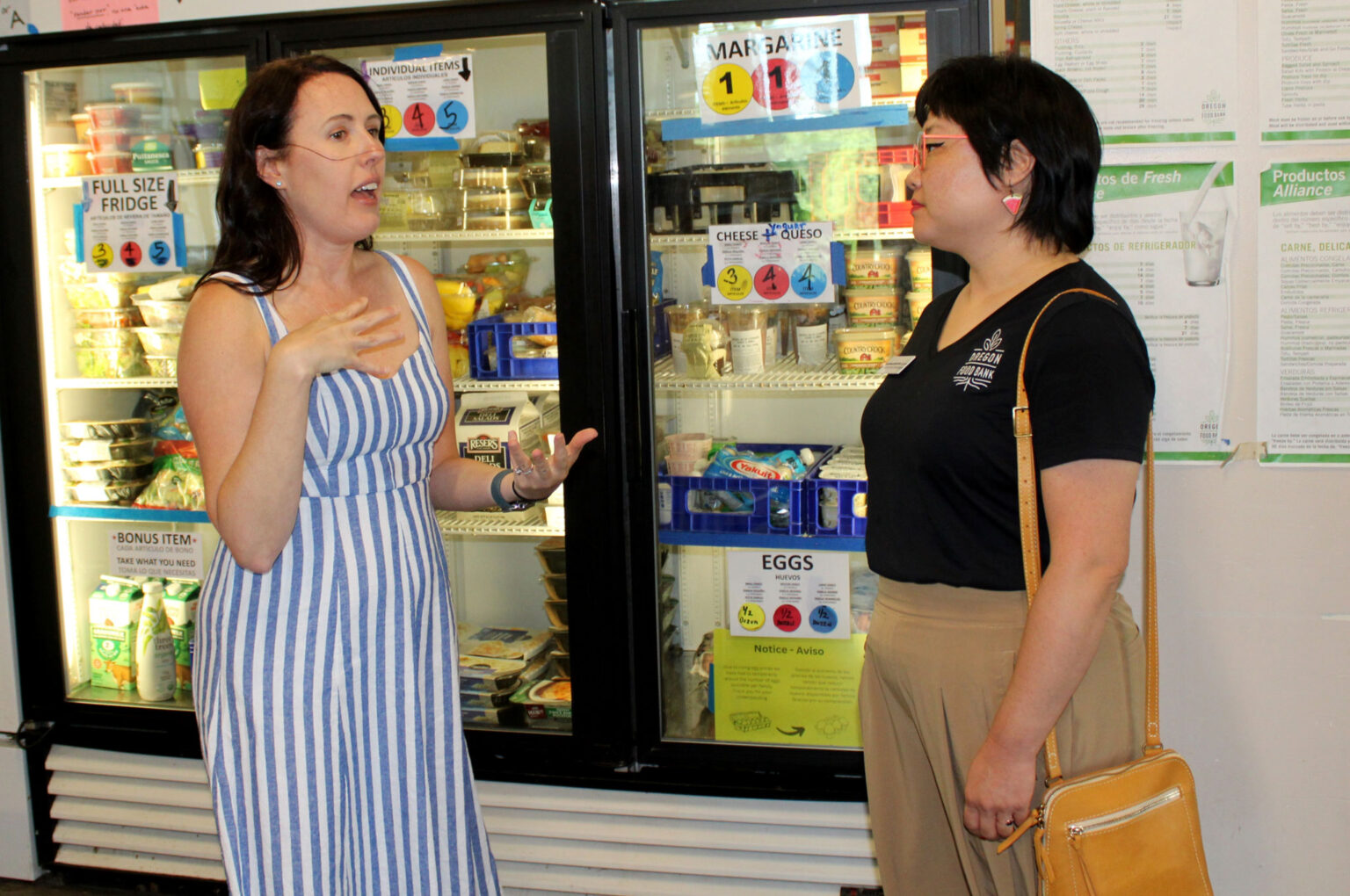TUALATIN, Ore. – On a recent Monday afternoon, the line began forming outside the Tualatin Food Pantry an hour before the doors opened. By the time shopping began at 4 p.m., the lobby was filled with families waiting for their turn to collect groceries.
“It’s first come, first served,” explained Danielle Schneider, executive director of the pantry. “We hand out numbers to determine the order for people to shop. A volunteer checks them in, whether they’ve visited us before or are coming for the very first time.”
The early crowd reflects a grim reality: Oregon is facing some of the worst food insecurity in its history, and food pantries across the state are straining to keep up.
Also Read
A Grocery-Style Pantry With Limitations
The Tualatin Food Pantry, once known as the Tualatin School House Pantry, is the fifth-largest in Clackamas and Washington counties combined. Its 5,600-square-foot space, located in the lower level of Rolling Hills Community Church, is organized like a grocery store.
After check-in, families move through aisles of produce, bread, canned goods, and pantry staples. Local farmers often donate fresh items such as tomatoes, zucchini, pears, and cucumbers. While produce is unlimited, most other items are rationed by family size: small families can take one item per category, while larger households can take two.
Meat is particularly scarce. Each household receives three to five pounds depending on size, along with frozen vegetables and six eggs. “It’s really challenging for us to secure donated meat,” Schneider admitted. Bread, pasta, beans, and peanut butter follow in short supply, while a small “baby area” offers limited infant products.
Special touches bring comfort: a birthday cart stocked with donated cake mix, frosting, and party supplies for kids, and a mini-mart for unhoused neighbors with ready-to-eat foods and even can openers. Children’s books donated by volunteers line another aisle.
The Role of Volunteers and Donors
The pantry relies heavily on donations from grocery stores and the community. When stores have excess or seasonal goods—or experience mechanical breakdowns—TFP is often called in. “One year Target donated shredded cheese after a freezer failed,” Schneider recalled. “We had cheese for two and a half months.”
Despite limited staff, the pantry stays afloat thanks to volunteers who restock shelves, pick up donations, check in shoppers, and keep the operation running. “We do a lot with a very small paid staff,” said Schneider. “We have volunteer jobs for any age from 10 up.”
Startling Hunger Statistics
The demand isn’t limited to Tualatin. Statewide, Oregon’s food insecurity rate stands at 14.2%, on par with the national average. In Washington County, the rate is 11.7%; in Clackamas County, 11.4%.
The Oregon Food Bank (OFB), which supplies pantries like Tualatin, reports a 31% increase in pantry visits from 2023 to 2024. “We are currently distributing the most food in the history of the organization, but it’s still not enough,” said Mary Carman, OFB’s Food Assistance Network strategist.
OFB helped more than 10,000 households last year, yet Carman warns that looming cuts to SNAP benefits—tied to new restrictions in federal legislation—will drive even more families to pantries. “Food insecurity is the worst it has been in at least a decade,” she said.
One in six Oregon children now faces hunger. Advocates had hoped for relief through legislation like HB 3435 (School Meals for All) and SB 611 (Food for All Oregonians), but both failed to advance during the last two long sessions of the Legislature.
Distinction Between Banks and Pantries
Carman stressed the difference between a food bank and a pantry: food banks like OFB are large regional distribution centers, while food pantries are the local access points where families “shop” for food. The OFB network includes 21 regional banks and branches statewide, each supporting dozens of smaller pantries.
By the Numbers: Tualatin’s 2024 Impact
Despite constraints, the Tualatin Food Pantry made an enormous contribution last year:
-
11,200 households served (duplicated count)
-
775,210 pounds of donated food sorted and redistributed
-
41,714 people served (duplicated count)
-
664 open hours for client shopping
The pantry operates four days per week for a total of 13 shopping hours, with significant behind-the-scenes preparation to keep shelves stocked.
Financial Challenges Loom
While the pantry is independent of Rolling Hills Community Church, its location in the church basement comes with a deeply discounted rent rate, which Schneider says makes the space possible. But with donations stretched thin and demand rising, keeping shelves stocked remains a constant challenge.
Schneider points to the bigger picture: Oregon’s housing crisis, high grocery prices, and federal SNAP cuts are colliding to create unprecedented need. “We are the fifth-largest pantry in two counties, and we’re still growing rapidly,” she said.
Looking Ahead
The Oregon Food Bank continues to distribute record amounts of food, but leaders say it cannot keep pace without broader policy support. For now, local pantries like Tualatin remain critical lifelines, offering not just groceries but dignity, support, and a sense of community for struggling families.
As Schneider reflected while surveying shelves partially stocked with mac and cheese, beans, and rice: “People come here because they have nowhere else to turn. We’re here to make sure they don’t leave empty-handed.”












